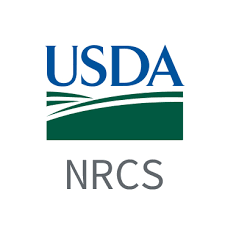
USDA Natural Resources Conservation Service
By Bob Sowers, NRCS
You may be curious about what’s happening on the lands across the United States over time. If we didn’t have the data collection of the National Resources Inventory (NRI), we could only guess.
NRI collects data on natural resources, soil and water conservation practices, irrigation, and many other farming practices so we can not only know what has happened, but also evaluate trends and help policymakers guide future efforts. For 35 years, NRCS has been collecting information on the status and condition of land, soil, water, and related resources on the Nation’s non-federal lands. The data is held in the NRI, an NRCS database program that samples points in 49 States (excludes Alaska), Puerto Rico, and the Virgin Islands to assess resource quantity and quality. By sampling the same points for the same data over many years, NRCS has created a long-term data set for everyone to use.
When NRI first started, the information was gathered every 5 years, in 1982 and continuing in 1987, 1992, and 1997. Starting in 2000, the data was collected annually. Even though the data is collected each year and compiled into the collection database, NRI must run a complex estimation process to create a consistent database accurately reflecting trends over time, which is why releases occur every 5 years. The most recent report came out in September 2020, the 2017 National Resources Inventory Summary Report.
If you are wondering why the 2017 report came out in 2020, it’s because the data involved is so extensive that it takes years to collect and compile it into a final dataset leading to the report. Most of the data is collected from aerial photographs taken from airplanes and analyzed by cartographers. About 72,000 photos (from a total of 800,000 sample sites) are taken annually, and all those photos must be assessed by a cartographer to determine what’s happening on the land. The rest of the data is collected locally by NRCS staff.
The 2017 report shows trends from 2012 to 2017, but it is not limited to just that time period. Conclusions from the report will take years to evolve as people study the data, but we can already see that cropland acreage increased, erosion rates stabilized, and the expansion of developed land decreased. Some highlights include:
- Cropland acreage increased by 5.6 million acres between 2012 and 2017, continuing a trend since 2007. Eighty percent of that increase came from land coming out of the Conservation Reserve Program, which decreased during that time.
- Forest land continued to steadily increase over the last 35 years, with an increase of 1.1 million acres between 2012 and 2017. The increase was mostly from conversion from pastureland, counterbalancing losses to developed land.
- Rangeland continued to steadily decline over the last 35 years with a reduction of 1.2 million acres between 2012 and 2017. Most of that reduction was due to losses to cropland and developed land.
- Palustrine and estuarian wetlands saw no change overall between 2012 and 2017.
- Cropland erosion rates remained stable despite the increase in overall cropland, indicating that new cropland does not have a higher likelihood of erosion.
The report also gives a statistical perspective on natural resource and environmental conditions for these lands, with the specific goal of supporting agricultural and environmental policy development and program implementation. It serves as the foundation for critical analytical efforts for USDA and other agencies and groups.
If you have questions about the NRI 2017 report, please contact National Statistician Patrick Flanagan of the Resource Inventory Branch at patrick.flanagan@usda.gov.
